British Army vehicles to receive major support under new deal with Babcock.
The Ministry of Defence has signed a £1.6 billion contract extension with British defence firm Babcock to deliver maintenance and support for key British Army equipment over the next five years.
The agreement will ensure Challenger 2 tanks, 105mm light guns, Trojan armoured vehicles and other assets remain operational and combat-ready. Services will include preventative maintenance, emergency repairs and spare parts management.
More than 1,600 jobs across the UK are directly supported by the contract, with over 400 positions in Telford and more than 250 in Dorset. Babcock’s wider defence supply chain involves approximately 6,000 British businesses and will include 200 apprenticeships in areas such as HGV maintenance and automotive refinishing.
The announcement follows the Prime Minister’s commitment to raise defence spending to 2.5% of GDP and forms part of wider efforts to enhance the UK’s defence industrial base.
Defence Secretary John Healey MP said:
“Tanks, armoured vehicles and kit are the backbone of the British Army. We are taking action to ensure the outstanding service men and women of our Armed Forces are properly equipped and ready to respond to ever-changing global threats. This substantial investment with Babcock demonstrates how defence is an engine for growth: supporting businesses of all sizes and sustaining more than 1,600 good, well-paid jobs across Britain.”
Babcock CEO David Lockwood added:
“In a period of increased global instability, more is being expected of our armed forces. This contract extension ensures that Babcock continues to provide the British Army with the tools to do its job, when and wherever they are needed.”
Major General Lizzie Faithfull-Davies CBE, MOD Director Land Environment, said:
“It has taken a lot of hard work to collaboratively deliver this SPTC Reframe contract amendment. With this amended contract, DE&S, the Army, and Babcock will now provide even better support to the in-Service platforms of our Armed forces.”
The agreement precedes the UK’s upcoming Defence Industrial Strategy and aligns with wider efforts to enhance SME access to defence contracts and set direct spending targets within the MOD.


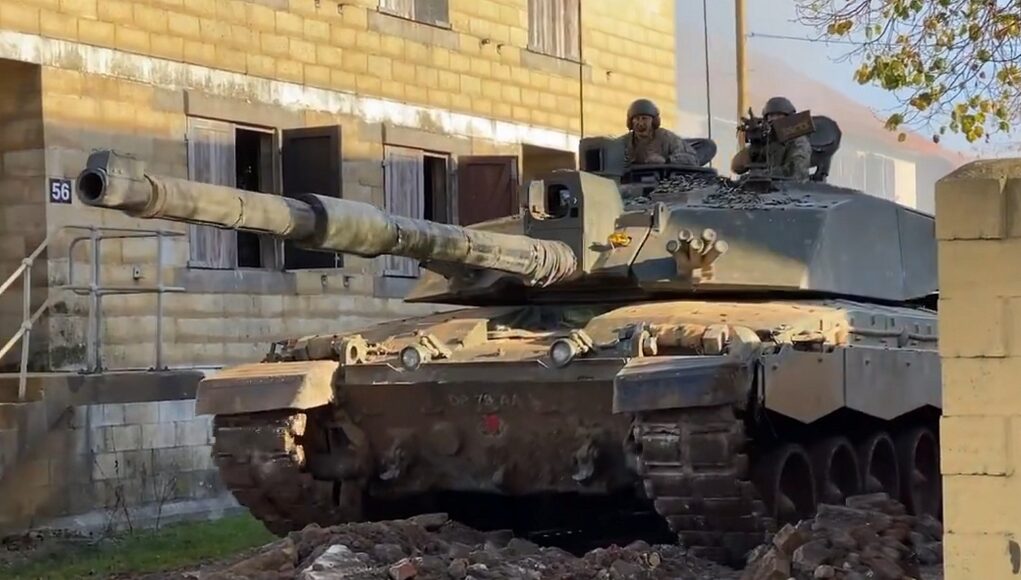
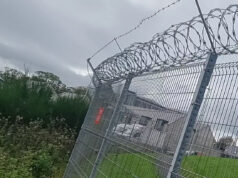

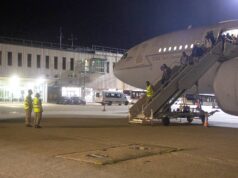

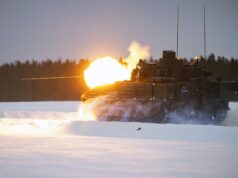

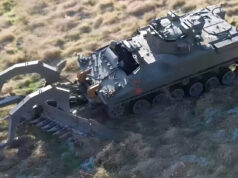
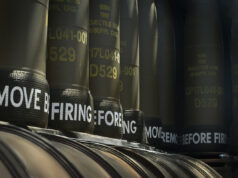

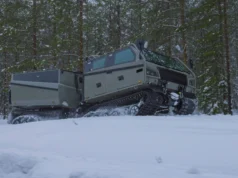

…I imagine if the UK actually purchased some NEW tanks as well 🤔
.
.
Yes someone will spruke “…a top 10 defence budget” …no point if that buying power is inefficiently spent, basically flushed down the toilet.
.
.
The UK should just bite the bullet (sic) and jump to 4% for the 3 services and demolish the 4th (MoD). That would provide the services the money and latitude necessary to get the kit they need at an expedited manner, and not have to stretch programmes out to suit the fiscal under-funding they present (barely) exist under. The MoD especially is a (costly money and time blackhole) bureaucracy militaries can do without in these times.
No edit on this page!
Typo: …Imagine
Edits… aah them were the days.
The Best opportunities To Earn $22,000/Month. We all spend a lot of time on social media every day – Facebook, Instagram, Snapchat, Twitter, and the list goes on. If you’re used to getting a lot of likes or comments, or if you’re great at motivating others through your posts, you might want to consider turning this into a profession. It appears unbelievable but you won’t forgive yourself if you do not check it…
HERE →→→→ 𝐖𝐰𝐰.𝐇𝐢𝐠𝐡𝐏𝐫𝐨𝐟𝐢𝐭𝟏.𝐂𝐨𝐦
I make up to $24 an hour working from my home. My story is that I quit working at Walmart to work online and with a little effort I easily bring in around $45h to $89h… Someone was good to me by sharing this link with me, so now I am hoping I could help someone else out there by sharing this link.Try it, you won’t regret it!.!
HERE→ 𝗪𝘄𝘄.𝗪𝗼𝗿𝗸𝘀𝗣𝗿𝗼𝗳𝗶𝘁𝟳.𝗖𝗼𝗺
I am making a good salary from home $4580-$5240/week , which is amazing under a year ago I was jobless in a horrible economy. I thank God every day I was blessed with these instructions and now its my duty to pay it forward and share it with Everyone,
Here is I started_______ 𝐖𝐖𝐖.𝐖𝐎𝐑𝐊𝐒𝐓𝐀𝐑𝟏.𝐂𝐎𝐌
I am making a good salary from home $4580-$5240/week , which is amazing under a year ago I was jobless in a horrible economy. I thank God every day I was blessed with these instructions and now its my duty to pay it forward and share it with Everyone,
Here is I started_______ 𝐖𝐖𝐖.𝐖𝐎𝐑𝐊𝐒𝐓𝐀𝐑𝟏.𝐂𝐎𝐌
I’d Upvote that given the chance.
Yes, I miss the dits.
Or… be really radical.
Scrap the three separate 4* HQs, instead maintain 3* single domain HQs (ie Land, Air and Maritime) under 4* Strategic Command. Remove the necessity to maintain triplicate functions across defence.
And whilst we’re at it, we don’t really NEED the regimental system with separate regimental HQs looking at dress policy, manning, promotion etc. We can maintain regimental identity without that.
That would hopefully end the silly prospect of top 10% officers and NCOs not getting command appointments because their own regiment is full, but bottom third equivalents in other regiments getting said appointments because their average scores are lower.
There are four times as many Army officers of General rank than operational CH2 tanks. At least 5 times more Admirals than RN ships available. And three times more Air Vice Marshals than operational Typhoons and F35, let alone qualified pilots
But it’s OK. Wallace spent £160,000 redecorating the RA Foxhound kennels at Larkhill in 2023. Meanwhile my grandson and his wife were living in damp married quarters with black mould in the bathroom
There aren’t 3 4* commands, there’s 4.
RN, Army, RAF and Stratcom. Functions that all three services require are already managed centrally by Stratcom (eg Defence Medical Services or DSF).
Senior Officers and NCOs aren’t limited by the Regimentsl system, SNCO and Field Officer pids are based on administrative division, not Regiment. So a CSgt in PWRR will have appointments available in PWRR, R. Anglicans, RRF, Lancs, Mercians, and 3 Ranger, plus all QD E1 postings, and Army wide E2 postings. There is also nothing preventing a SNCO putting in a DTA to go to a different division. (Plus SNCOs do not hold command appointments).
For officers it’s even more fluid.
Re RHQs: If RHQs (and Admin Divisions);don’t manage manning then someone else will have to, so false economy. RHQs don’t spend much time worrying about dress standards either, those are fairly static. What RHQs do spend a lot of time on is managing charities, and, usually through those charities, being a point of help for veterans and families of deceased members of the regiment who may fall on hard times.
In that sense cutting RHQs would have a measurable negative impact.
Being radical is turning the whole shooting match into a British single service Royal Marines. The USMC is a similar size to the entire British Armed Forces. Given the size of operational formations, CDS should be a three star; maritime land and air two star. The MoD could be dispensed with, a skeleton services procurement simply acquiring best in class in service equipment selected a great deal more efficiently by competent allies, e.g. Poland, Denmark. Imagine the savings. We might then be able to field a credible conventional deterrent.
The Army, Navy and Airforce make up the MOD, it’s not a separate organisation.
Of course it is. Yes the services are component parts of it, and there are also parts that are neither Army, RAF, or RN, and they’re MoD organisations.
Umh…I think you’ll find it is.
The MOD is a ministry ( department) within HMG the army, airforce and navy are executive agencies that report to the MOD in the same way as NHS England is an executive agency that reports to the depart of health. They are separate legal entities.
Scrap the MoD. 🙄
And who would provide the dozens and dozens of organisations it comprises?
1. The military themselves?
2. More contracting out?
3. Or don’t have them?
4. Other ?
I think the members of this site could adequately take up the mantle.
Or so one would believe !
The MOD is the ministry of defence it’s part of the government you cannot scrap a core part of the government, it is the political control element..the army navy and airforce are executive agencies that are there to do what the MOD tells them to do. You may not like it but the services are there to service HMG and the MOD is the bit of HMG that controls defence… in the same way however much it gets on my nerves you cannot scrap the department of health and just have the NHS organisations because the NHS organisations are executive agencies they are not HMG.
It’s one of those things that are difficult to get our heads around but HMG is essentially if you reduce it down and look at it simply we have a system as follows
The legislative ( parliament the bit we vote for makes laws and forms the executive )
The Executive (the PM and there ministers) essentially undertakes political control of the country on behalf of parliament and the monarchy)
The Ministries ( controlled directly by a member of the executive and essentially there to undertake the political actions as directed by that member of the executive)
executive agencies ( forces, police, NHS organisations etc) these are agencies empowered by the ministry they report to to spend money and undertake actions, at the directions of the ministry they report to ).
How do you think you’re going to do procurement then? Or cyber security? Or strategy? Or R&D? Or do you not think a modern military requires those things?
I was going to make a list of the different areas, Orgs, Groups, Directorates, but I just cannot be asked.
So many just see Army RN RAF and have no appreciation or knowledge of wider defence and the many organisations in MoD that support them, without which the lot fails.
Alanbrooke did strategy. The Army Board etc did procurement. Cyber would benefit from a single joint service set up. The Services are doing (some of) their own R&D, long overdue. The tail has been wagging the dog for far too long. Efficient organisations are organised to support the outward facing contact groups. They are not organised as self licking lollipop.
Getting there on Cyber, which is already joint.
Defence has the Joint CEMA Group.
Then you also have the wider JCG.
The Army have the CEMAEG for army centric Cyber.
A lot of it is merging into the National Cyber Force and PAGC.
Ex-S, If we consider the CR3 to be an upgrade to CR2, which it is, then the army will probably not buy any NEW tanks until the mid-2040s at the very, very earliest.
I understand your frutsration at the MoD – presumably just the Head Office piece – but they are necessary, of course.
Would there be some opportunity to retain 50 or 60 CH2 beyond the CH3 introduction and include their maintenance within this Badcock agreement? I’ve given up wishing for more CH2 conversions to CH3 spec, and this may be a way of retaining around 200 MBT’s in the fleet.
That’s a ‘bold and ambitious’ thought for the SDR. Go to the top of the class 🙂
There are 2 constraints on CH3 totals – 1) funds and 2) CH2 hulls that are assessed as being in a state to upgrade rather than write off. It seems the 148 number was due to cost, but adding more funds won’t stretch the numbers that much (certainly not for a 3rd regiment, unless regiments shrank tank counts) given the second constraint.
Actually the 2nd constraint is directly tied to the 1st. What is counted as “fit state to upgrade” is directly tied to cost of upgrade. RBSL might not want to touch some hulls at 5 Mil per refurb.
But 7 Mil per refurb and the “start state” could be revised downward.
I would a say it was more to do with how many are required for the planned force structure the 148 is a function of how many are needed for 2 regiments, maintaince pool, attrition reserve and training establishments. So why would anyone even have looked at the cost and viability of the other hulls.. you decide how many you need for your plans, pick 148 cost that up and that’s the job.. it’s why all these assumptions around the rest of the fleet not being viable are mistaken.. the MOD did not develop a contract to say how many MBTs can to convert for x money..they developed a contract that said this is how many we need and this is the cost envelope everyone put in your bids.
Yes, Jonathan, but that was based on the military balance before Ukraine and that war has blown war planning out of the window. To compound matters, ‘Trumpy’ has blown a hole in NATO’s strategy the size of Basildon!! All I’m suggesting is a relatively small increase in ‘Strategic Reserve,’ and even then, the numbers are too small. If in the coming months the US announces a drawdown timetable of US forces in Europe and with their huge contribution to peace, then each major country in Europe will need at least 2-3,000 MBT to match the growing Russian tank output. I’m sure the pending Defence Review will go the way of the last budget and urgently revisited as we will witness today in the Spring Statement. Recalibration of UK defence has only scratched the surface, and tax rises not seen in decades await.
I completely agree with you, essentially a lot of people seem to think it’s not possible to convert more because the number being converted it’s 148..but actually, as Dern pointed out there are the 213 + around 70 hulls hanging around and as I think Graham Moore pointed out just because a challenger 2 is not serviceable does not mean it’s not economic to convert it to a challenger 3..especially as the base conversion is only 5.5 million and a new MBT costs in the region of 20-25 million. I would like to see at least 210 converted as that number would give the army options on 3 MBT equipped Regiments and I think that’s a really important line.
If you watch Mr Huges’ Tank Restoration on YouTube, most UK MBTs he works on are basically in good order in terms of hull integrity and even the engines are brought back to life if not a bit smoky. The Challenger 1 hulls are the foundation on which CH2 and CH3 are probably built, like Chieftain, constructed to a very high level of durability. That said, retaining a fleet of 50+CH2 would probably not require significant repair to hulls and there will be plenty of turrets to ensure a good parts bin. Knowing the MOD’s pension for scrapping perfectly good kit I don’t hold out too much hope for my suggestion.
Mr Hughes is indeed the Allen Millyard of Armoured Vehicles but he is an enthusiast,those Tanks etc are used for leisure purposes AFAIK,have you ever seen him NDT or Xray Welds ?,i have not in the videos ive seen.Not sure why you mentioned CR1 but no the Hulls were not overly durable.
That’s not how it works..the commissioning of the contract would have looked at the following
1) what do we need..so the very first question is what is the min number of MBTs needed for a force structure of 2 type 56 MBT regiments..including attrition pool, training establishment needs and maintenance pool..they would have decided how many at this point
2) they would have their allocated budget
3) they would under pre commissioning/tendering market engagement to ensure they could get companies to tender.
4) they would offer out the tender with numbers required and budget allocation, companies would then place in their bids for the work
At no time would anyone sit down and do the work on how much would it cost to convert 200 MBTs or what that engineering task would look like..it’s not something you do when your a commissioner developing your tender process.. because it’s a waste of time and money and confuses the process.. you decide what you need and develop the process of tender and assessment from that.
Craig, a further constraint is the Future Soldier ORBAT which does not have a third armoured regiment, therefore there is no manpower to populate a third regiment. Blame that last cut of 10,000 army posts.
Those 50 CH2 (hulls) would give us a Home Guard Regiment. We’re going to need them.
Jonno, what is a Home Guard Regiment? Sounds very Dad’s Army! Not sure we need armour to defend the UK homeland.
Like the RAF T1 Typhoon conundrum,the BA would probably not be in a position to operate a Mixed Fleet of MBT’s,get as many CR3 Conversions as is humanely possible and consign CR2 to the History Books.
The BA has operated a mixed fleet of MBTs before. From 1983 to c.1998, it operated a CR1 and CH fleet in order to maintain a total fleet of about 900 tanks. So long as manpower is reinstated somehow for the 3rd Regt it could be done.
But I do agree your point.
I think that is what this contract is about. It is for maintenance of older equipment that will remain in service or reserve for the forseeable future. It is maybe a tacit admission that maintenance on these items has not been a high priority and not up to scratch.
The Challenger 2 is a case in point. If we really only had 157 serviceable out of 227, as was reported a year or so ago, it suggests that maintenance and spare parts had been rather neglected. The idea that a lot of those deemed unserviceable were really just in need of a new radiator or repairs to the tracks or something routine like that suggests that the task of maintaining the reserve fleet was not being carried out too punctilliously. Tight budgets, manpower cuts and enforced savings lead to a reduction to the bone in what the forces can do.
This is a good move. We need to look after our L118 light guns and Trojans, because there is no replacement on the drawing board at the moment and we will need them fully serviceable and ready to roll if things hot up in Ukraine. I hope the ‘other equipment’ referred to in the statement includes the Titan and, in particular, the elderly CRARRV, the REME’s Challenger 1 heavy repair and recovery vehicle, which is rather long in the tooth now.
I’m amazed we still use light guns I don’t know why we don’t just get 120mm mortars and be done with the 105mm in Ukraine they say the 105mm does hardly anything to dug in troops
More fuze options with a 105mm plus better range and the option of DF. I am however a big advocate of the 120mm to replace our 81s, but it will change the logistics footprint and will make light role Battalions work a little harder and less “light” 👍
Cripes, I am not sure why you say ‘only’ 157 tanks. That is a very good figure, especially for a very old vehicle with huge obsolescence issues.. When I was serving we always aimed for availability of typically 70% of battle-winning equipments at all times (rising to 90% after 1-2 days of concerted work by crews and REME, assuming spares were available). To compare across the Services, I doubt ships or aircraft would have a higher availability figure.
Very true that the REME CRARRV is long in the tooth. Based on a modified CR1 hull it does have a CR2 power train and was first fielded in 1988, so is heading for 40 years old, and only has Rolled Homogenous Armour, not Chobham, so is poorly protected except if it is fitted with applique TES armour packs.
I wonder how much of this is out sourcing functions that should be done within the Army. These civilians are unlikely to sent to an Afghan or Iraqi situation except at high cost.
More squaddies required, different budget.
Dave, I wonder how this outsourcing is any better than the original system. It certainly cannot be cheaper given that Babcocks has to make a profit, although of course MoD gets in-house maintainers ‘off its books’, which HMT like to see.
I wonder what activities they include under preventative maintenance?
In my early days the User did Level 1 maint which included servicing (preventative maintenance), REME field force did Level 2 and Level 3 and the In-house ABRO (and its predecessors (REME static workshops all commanded by a REME officer)) did Level 3 and some Level 4 including Base Overhauls (BOH), arguably a form of preventative maintenance. The OEM did very significant Level 4 when tasked. We also contracted civilian companies by Contract Repair Branch REME (now defunct). Just one example of a service by a contractor was Oil Health Monitoring for AFVs, a preventative maintenance element.
There is doubt as to whether all AFVs now get a BOH by Babcocks every 7 or so years, but depending on usage and equipment condition.
What is covered by Babcocks under ’emergency repairs’? This is a very broad term, borrowed from civvy street. How quickly do they conduct said emergency repair and do they work 24/7/365 to achieve it?
Do we not have static REME Workshops anymore? When did they disappear?
Cripes, In 1993, all REME static workshops (each commanded by a REME officer with a very small number of REME SNCOs but largely civilian workforce) in GB were rebranded as ABRO workshops in 1993, which remained in-house, although moved out of REME’s control.
ABRO comprised the headquarters at Andover, a contract repair branch and a network of base and district workshops. It employed 3,581 civilian workers and 219 military staff.
The major static units were at Bovington, Old Dalby, Catterick, Colchester, Donnington, Stirling and Warminster, with smaller sites at Bicester, Edinburgh, Sennybridge and York. ABRO became a trading fund in 2002.
ABRO was merged with DARA, the Defence Aviation Repair Agency to become the Defence Support Group (DSG) in 2008.
Still an in-house organisation.
But most of DSG was contractorised by being sold to Babcock International in 2015, while the remainder became the Defence Electronics and Components Agency (DECA).
Babcock largely took over the running of the former in-house sites for aviation and vehicles maintenance, repair, and overhaul. Sites being (in 2015) at: Ashchurch, Bovington, Catterick, Colchester, Donnington, Sealand, St Athan, Stafford, Stirling, Warminster.
Smaller support sites at: Aldershot, Bicester, Sennybridge.
I have no info on how things may have changed since 2015, but there has been justifiable criticism of the Bovington operation (formerly 18 Base Wksp REME), with much little-used but expensive machinery being sold or scrapped and question marks being raised over the quality of the sites work.
Brilliant post Graham, many thanks for that. It is a sorry tale how we have run down our former excellent capabilities right across the army to cut costs at whatever price.
Agree totally Dave. The problem is, having underspent on defence for so long, the only way the forces could afford even some of the new equipment needed, was to slash manpower numbers and costs to switch funds to the equipment procurement budget. Result is that the army in particular is now far too small and yet still poorly equipped.
This contracting out of maintenance, catering, recruiting etc is a cost-cutting peacetime route that would prove hopeless in conflict, with a horde of civvys with no military training to be looked after. If we get to 3% of GDP, it is essential that we start to build up mass and phase out over-reliance on civilian contractors.
Dave, of course these civvies don’t deploy. They are not in the Field Force aka the Field Army. That is what REME is for.
More Staff cars ,must be a priority we seem too have more Admiral’s than ships. And I can’t see them doing a car share .
Pity, we once had the ABRO then the DSG, before they too were scrapped.
What we’re these Daniele? I dimly remember them but there have been so many changes with so many useful capabilities axed, it is hard to keep up without your compendious knowledge!
Army Base Repair Organisation & Defence Support Group.
👍
As Bell says. In house maintenance capabilities.
Daniele, Babcock is DSG, Defence Support Group.
Yes mate, I know, I meant the earlier version!
The Defence Support Group I referred to was the in-house DSG that was the result of the merger of ABRO and DARA.
It was still an MoD entity, before it itself was part sold off to Babcock.
For interest, the avionics side, thus strategically vital, was retained at Sealand and is now DECA, part of DE&S and involved with F35.
Thanks Bell and Daniele. Every day is a school day on here!
We need this and we need to add a LOT of new vehicles made in the UK which supports our ability when the impending war with the russia-usa alliance starts
What’s the role of REME these days if we contract vehicle maintenance out?
😲 This contractor vehicle maintenance is at static UK home base locations.
REMEs role is in the field, like the Royal Engineers.
The REME supports all army units, from REME Battalions attached to Brigades to LADs with Battalions and WKShps with some Regiments.
One of our posters here, Graham, was an officer in the REME, and can give any detail you require. Ian M, and I think Jacko were also REME.
😲 This contractor vehicle maintenance is at static UK home base locations.
REMEs role is in the field, like the Royal Engineers.
The REME supports all army units, from REME Battalions attached to Brigades to LADs with Battalions and WKShps with some Regiments.
One of our posters here, Graham, was an officer in the REME, and can give any detail you require. Ian M, and I think Jacko were also REME.
Correction, Jacko was RE.
Spartan, Daniele is absolutely right. REME’s role as far as the Field Force is concerned, has not significantly changed since it was formed on 1st Oct 1942.
REME soldier/trademen are an integral part of the ‘User’ unit whose kit they support, at First Line. REME personnel are in organisations termed either ‘Attached Tradesmen REME’, LADs or Regimental Workshops (the latter is less common these days).
REME Battalions provide Second Line support.
REME personnel in the Field Force of course support all manner of technical equipment – vehicles, helicopters, radios, electronic equipment, radarrs, weapons of all calibres, etc etc
Additionally REME used to have a large number of Static workshops (non-deployable) in the UK and overseas, especially in Germany. The OC of each workshop was a REME officer and the workforce were MoD civilians (civil servants of technical grades). It is these that morphed into ABRO, then DSG (on merger with DARA), and then the vehicle-centric part was sold off to Babcock International. That is what the article is all about. [The REME Field Force is unaffected and unchanged – they continue to deploy and support the User]